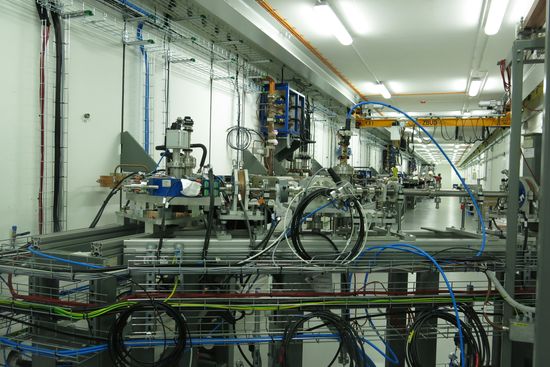Linear accelerator starts operating at SOLARIS Synchrotron Radiation Centre

Physicists and engineers of SOLARIS team have started putting the synchrotron linear accelerator (linac) into operation. It will accelerate electrons to the initial energy of 600 MeV. The beam will then be transported to the synchrotron through the transfer line in order to reach the full energy of 1.5 GeV, which is used in research.
Several start-up stages
"The first stage consists in the conditioning of the entire high-frequency system, which means that the nominal value of the electromagnetic wave used to accelerate the electron beam in the linac is gradually reached. The next stage will be to obtain an electron beam with the proper parameters in the electron gun system, and then accelerate it to the planned energy level," explains Ms Adriana Wawrzyniak, the Accelerator Operation and Development Coordinator.
It is important to reach the right parametres at the very beginning, since this ensures that the electron beam is injected to the storage ring without generating high electron losses.
In order to make the start of the accelerator possible, we conducted a number of calculations and simulations, which enabled us to choose the right parametres of the beam optics, and, consequently, set the fields of both focusing and corrector magnets properly.
Successful tests of subsystems
The starting of accelerator has been possible only after the successful completion of the installation works and the tests of the particular subsystems, such as the personal safety system, the high frequency modulators that power the linac, the cooling units, and the diagnostic systems.
Putting the linac into operation will take several more months. After this stage is successfully completed, it will be possible to finish the installation works in the storage ring and then put it into use.

Photos: National Synchrotron Radiation Centre SOLARIS
Published by: Łukasz Wspaniały
Uniwersytet Jagielloński

